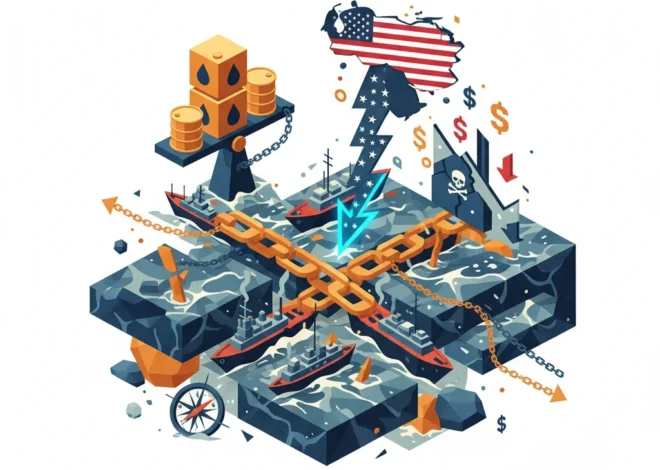
The Trump 2.0 Doctrine: What a Return to Power Means for Asian Markets and Global Finance
The global political landscape is holding its breath. As the United States gears up for another presidential election, investors, business leaders, and policymakers across the world are modeling the potential outcomes. At the center of this uncertainty lies a critical question with trillion-dollar implications: what would a second Donald Trump presidency mean for the world’s most dynamic economic region, Asia?
A recent discussion on the Financial Times’ ‘Rachman Review’ podcast, featuring Gideon Rachman and Jennifer Hughes, delved into this very issue, exploring whether the progress and policies from a potential Trump 2.0 would be a simple sequel or a radical new chapter. Moving beyond a simple transcript, this analysis unpacks the potential economic tremors, geopolitical shifts, and the direct impact on finance, investing, and the global economy.
For anyone with exposure to the Asian stock market, international trade, or the intricate dance of global banking, the next few years promise unprecedented volatility. Understanding the potential policy shifts is no longer an academic exercise—it’s an essential component of risk management and strategic planning.
The Tariff Tremor: A Return to Economic Shock and Awe
If there is one signature policy associated with Donald Trump, it is the tariff. His first term saw the initiation of a trade war with China that rattled supply chains and sent shockwaves through the global trading system. A second term promises to be even more disruptive. According to expert analysis discussed by the FT, two major proposals are on the table: a potential 60% tariff on all Chinese goods and a blanket 10% tariff on imports from the rest of the world.
The implications for the global economy are staggering. A 60% tariff on China would effectively force a rapid and chaotic decoupling of the world’s two largest economies. Companies would be forced to re-shore, near-shore, or “friend-shore” their supply chains at a pace that would inevitably lead to production bottlenecks, higher costs, and a significant inflationary shock. This isn’t just a challenge for manufacturing; it’s a direct threat to the entire financial ecosystem. The banking sector would have to navigate immense credit risk as businesses struggle to adapt, and the stock market would have to re-price entire sectors based on their exposure to this new world of protectionism.
The 10% universal tariff, meanwhile, would strain relationships with key allies in Asia, such as Japan, South Korea, and Vietnam, who have become crucial partners in the effort to diversify supply chains away from China. This move would signal that the “America First” doctrine applies to friend and foe alike, potentially unraveling decades of economic integration and cooperation. For professionals in finance and economics, this represents a fundamental shift from a globalized world of just-in-time efficiency to a fragmented one of just-in-case redundancy, with all the associated costs.
Beyond the Headlines: Why Record Carbon Emissions Are a Critical Red Flag for the Global Economy
The Geopolitical Chessboard: Alliances on Shaky Ground
Beyond the direct economic impact of tariffs, a Trump 2.0 presidency would likely reshape the geopolitical architecture of Asia. The Biden administration has invested heavily in strengthening alliances through initiatives like the Quad (US, Japan, Australia, India) and AUKUS (Australia, UK, US). These pacts are designed to create a strategic counterweight to China’s growing influence.
Trump’s approach, however, is famously transactional. He views alliances not through the lens of shared values and long-term security, but as commercial arrangements. His previous demands for allies like South Korea and Japan to pay significantly more for the stationing of US troops could resurface, creating deep anxiety in Seoul and Tokyo. This uncertainty undermines regional stability, a key ingredient for investor confidence. A perceived US withdrawal from its traditional security role could embolden regional adversaries and force allies to reconsider their own foreign policy and defense postures, potentially leading to a more militarized and volatile Asia.
This geopolitical instability has a direct correlation with market risk. Capital flight from regions perceived as unstable, currency fluctuations, and increased costs for political risk insurance are all direct consequences. The entire framework of international investing is predicated on a degree of predictable order, an order that a highly personalized and transactional foreign policy could easily upend.
US Policy on Asia: A Tale of Two Presidencies
To better understand the potential divergence, let’s compare the current approach with the likely policies of a second Trump administration. This table highlights the fundamental differences in strategy and philosophy.
| Policy Area | Current Biden Approach | Potential Trump 2.0 Approach |
|---|---|---|
| China Trade | Strategic competition; targeted tariffs and tech restrictions; “small yard, high fence” strategy. | Aggressive, broad-based tariffs (potentially 60%); focus on bilateral trade deficit reduction. |
| Regional Alliances | Strengthening pacts like the Quad and AUKUS; emphasis on shared democratic values. | Transactional view; demands for increased financial contributions; potential questioning of security guarantees. |
| Taiwan Policy | Continued “strategic ambiguity” but with strong rhetorical support and increased military coordination. | Highly unpredictable; could question the value of defending Taiwan if it doesn’t serve US economic interests. |
| Economic Strategy | Focus on building resilient supply chains with allies (friend-shoring); investment in domestic tech (CHIPS Act). | “America First” unilateralism; focus on re-shoring manufacturing through punitive tariffs on all imports. |
The Taiwan Tightrope and its Impact on Financial Technology
Nowhere are the stakes higher than in Taiwan. The island is the epicenter of the global semiconductor industry, a critical component in everything from smartphones to the servers that power the world’s financial technology infrastructure. Any disruption to Taiwan’s stability would have catastrophic consequences for the global economy, far surpassing the impact of the COVID-19 pandemic or the war in Ukraine.
While the official US policy of “strategic ambiguity” has been a cornerstone of stability for decades, Trump’s commentary has introduced a new level of uncertainty. He has publicly questioned whether the US should defend Taiwan, framing the issue in purely economic terms by pointing to Taiwan’s dominance in the chip industry as a competitive threat (source). This rhetoric alone increases risk, as it could be misinterpreted by Beijing as a green light for aggression.
For the fintech and banking sectors, the implications are profound. A crisis over Taiwan would not only halt the production of essential hardware but could also trigger a massive cyberwar, targeting financial institutions and critical infrastructure. This highlights the growing need for decentralized systems. Technologies like blockchain, which offer secure and distributed ledgers, could become increasingly attractive as a way to build resilience in a world where centralized systems are vulnerable to geopolitical shocks.
Beyond the Dollar: Decoding China's Strategy to Reshape Global Finance
The Investment Horizon: Navigating Radical Uncertainty
So, what does this all mean for the investor and the business leader? The primary takeaway is the need to prepare for a period of radical uncertainty and market volatility.
1. Diversification is Key: Geographic and sectoral diversification will be more critical than ever. Portfolios heavily concentrated in specific Asian markets or industries dependent on stable US-China trade will face significant headwinds.
2. Supply Chain Resilience: The era of prioritizing cost-efficiency above all is over. Businesses must invest in building resilient, redundant supply chains, even if it means higher operating costs. This is no longer a “nice-to-have” but a core part of risk management.
3. Watch Currencies and Commodities: Geopolitical tension often manifests in currency markets and commodity prices. A more protectionist US could lead to a stronger dollar in the short term, while disruptions in Asia could cause spikes in the prices of key industrial metals and energy.
4. The Rise of Geopolitical Risk Analysis: Traditional economic modeling based on fundamentals will be insufficient. Successful investing and trading will require a sophisticated understanding of geopolitics. The ability to analyze political risk will become as important as the ability to read a balance sheet.
India's Banking Sector Lands Record Foreign Investment: A New Era for the Global Economy?
In conclusion, a second Trump presidency would not be a continuation of his first term, but an acceleration of its most disruptive tendencies. The policies on the table—from massive tariffs to the questioning of long-standing alliances—would force a fundamental reordering of the global economy. For Asia, a region that has thrived on decades of globalization and relatively stable US security guarantees, the shock would be immense. The challenge for everyone in the world of finance, from the individual investor to the multinational bank, is to look past the daily noise of the stock market and prepare for the seismic shifts that may lie just over the horizon.


